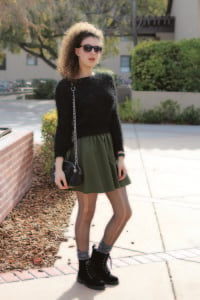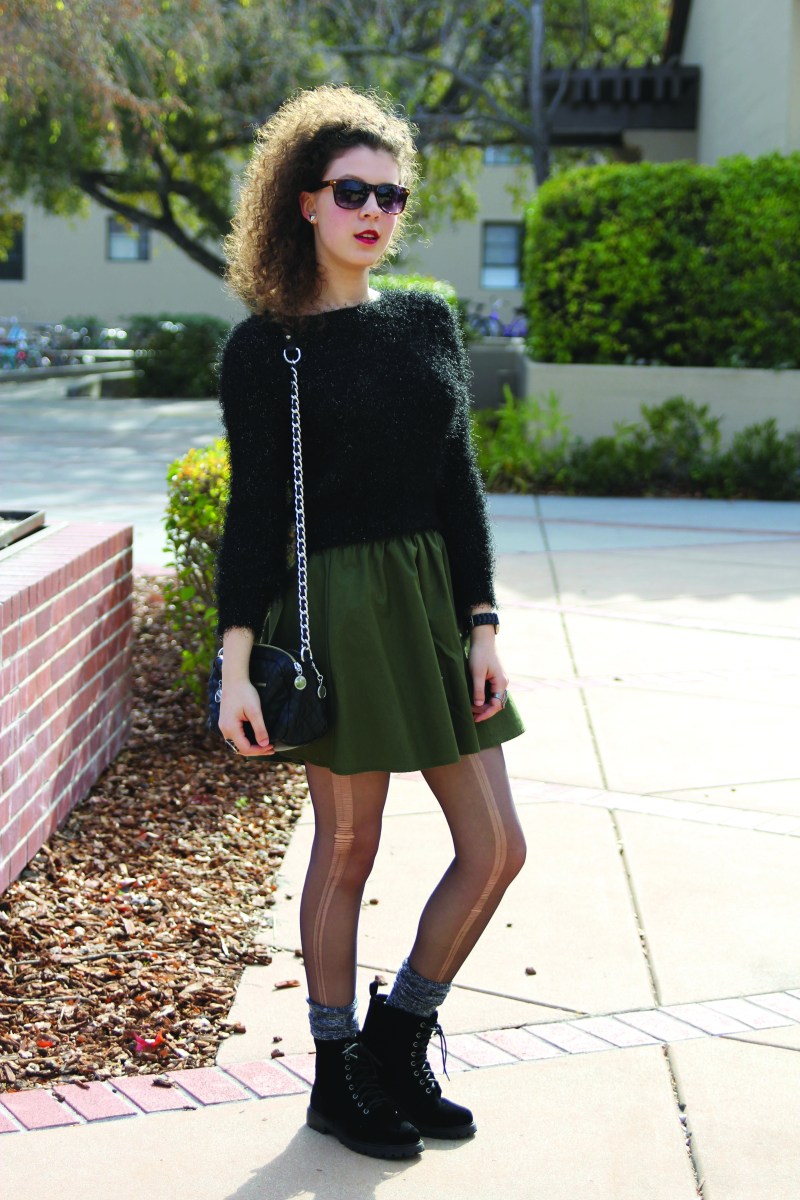On first glance, Stanford may seem vaguely apathetic towards fashion. A quick look around the quad certainly reveals the Stanford student uniform — a free t-shirt from the most recent career fair and a pair of sweatpants likely bought at the campus bookstore. Even so, a growing number of students are interested in the fashion industry — and pushing to change campus accordingly.
“Fashion is certainly not a big thing at Stanford, but I feel like it’s up and coming now,” said Ellen Rudolph ’16. “There are more opportunities to learn about fashion and there is a lot more interest than there has been in the past.”

So far, this academic year has seen the creation of two campus fashion magazine startups, including one (MINT Magazine) that plans to produce a fashion show in spring; the conclusion of the Stanford Arts Institute’s Fashion at Stanford series; and the hosting of several speakers from the fashion industry by Stanford Women in Business.
Even so, Stanford still lags behind peer institutions in terms of university-sponsored programs for students interested in entering the fashion industry.
Institutional engagement elsewhere
At Harvard, the school’s oldest fashion show “Eleganza” — one of several on campus — is approaching its 20th year. Vivian Lee, a Harvard student and one of two executive producers of Eleganza, said that Harvard’s career services have been doing a better job of bringing more fashion companies onto campus and helping students figure out their options in the industry.
“They’ve been trying to develop these relationships rather than make us develop them on our own,” Lee said.
Harvard also offers a program called the Vestis Council, which “seeks to provide educational, philanthropic and post-academic opportunities for its members, while exploring fashion as a trade, as a tradition and as an outlet for creative expression.”
The University of Pennsylvania (UPenn) similarly has a number of opportunities for students interested in fashion. The University’s Wharton School runs The Wharton Retail Club, which forges “a strong relationship between students interested in retail and the retail industry,” according to its website. The organization facilitates career panels for both undergraduates and graduate students and aims to create a strong alumni network.
Another UPenn student group, Dzine2Show, aims to provide students with the opportunity to learn about the makings of the fashion industry. Dzine2Show is part of the Penn Fashion Collective, which also produces a style and fashion magazine twice yearly.
According to Rolanda Evelyn, a student at UPenn and a member of the Penn Fashion Collective, there are frequent retail events — every other week” — and the program brings in many speakers from the industry to lecture to members.
“Its great to be around people who are interested in the same things,” she said.
“Though there isn’t a fashion design major, I personally feel that the Collective provides student designers with a great outlet to make and show their work,” Alexis Richards, another student involved with the Collective, wrote in an email to The Daily.
Penn does offer a Consumer Psychology minor and a retailing concentration.
Yale and Cornell also offer multiple opportunities for students interested in fashion. Yale has two undergraduate fashion clubs — YCouture and Runway Inc. — and Cornell has a fashion collective that has put on fashion shows for 30 years. Cornell also offers a Fiber Science and Apparel Design undergraduate major.
Burgeoning student initiatives
By contrast, Stanford’s only recognized fashion related club, aside from the newly founded MINT magazine, is at the Graduate School of Business: the Retail & Luxury Goods Club. Out of roughly 280 business graduate students, the retail club has 70 to 80 active members and a much longer interest list. Unfortunately, entry into the Stanford Retail Club is exclusive to business graduate students.
Alex Day MBA ’14, co-president of the Retail Club, stated that she would be willing to begin a mentorship program if the demand for one arose.
“If there’s any sense that people in undergrad want mentorship from people who have been in the industry…we’d be open to forming those relationships,” she said. “To tell you the truth the business school gets a little insular — we live in our campus and don’t move much beyond it…we’d always be happy to be a resource. ”
There are, however, other ways for undergraduates interested in fashion to get involved on campus.
Last winter, for example, Rudolph applied and was accepted to be part of Rent the Runway’s “It-Girl Program.” She, along with several girls on college campuses around the country, was made responsible for her own Rent the Runway closet on campus. For $75 a month, students could subscribe to her closet and have full access to the 25 or so dresses. Rudolph had 20 subscribers last year and now serves as a campus representative for the company.
Emmy Armintrout ’14 took a more typically Stanford approach to fashion, stumbling into the industry through an internship last summer at a startup. When Armintrout applied to ThirdLove, an app that uses photos and computer vision to take women’s measurements and create custom-sized bras, the company was in stealth, meaning that she didn’t even fully know what they did until she started working there.
Following the internship, Amintrout became an ambassador for ThirdLove at Stanford. As an ambassador, Armintrout is responsible for promoting the brand on campus through events and her Facebook page, and she has also given students an opportunity to connect with ThirdLove cofounder Heidi Zak.
“The fashion world is increasingly intersecting with tech, which I think is exciting for Stanford students who have interests in both,” Armintrout said.
Fashion has also entered into academia at Stanford, with a growing number of classes now focusing on the field.
“I think Stanford has made great strides in making it a legitimate academic field,” Rudolph said. “There are more art history classes that explore fashion and speaker series that feature people in the industry.”
Elizabeth Kessler, a lecturer in art and art history, teaches one such class, called Fashion Shows: From Lady Godiva to Lady Gaga. Kessler’s class focuses on the nexus between fashion and art. The class had an enrollment of 55 students last year.
“I can say that there is a lot of interest for students now in fashion,” Kessler said.
Kessler focused specifically on the scholarship of fashion, which she thinks is a growing field.
“In general I think college is about thinking about big questions…Fashion is a really big part of our visual culture and our visual experience, [and] there are big questions about what that says and why that is,” Kessler said. “If that leads to and fuels professional interests for students then that meeting is all to the good.”
Despite the recent spike in attention paid to fashion on campus, some students said that they still hope for more on-campus opportunities, similar to those offered at other universities.
“I didn’t come to Stanford to study fashion, but it’s an interest of mine and a potential career path,” Rudolph said. “I feel like I’ve had to go off the beaten path to pursue opportunities because there aren’t many fashion opportunities here. It’s definitely been frustrating but it’s also allowed me to pave the way for myself and others who share the same interest.”
Contact Josie Hodson at jhodson ‘at’ stanford.edu.
